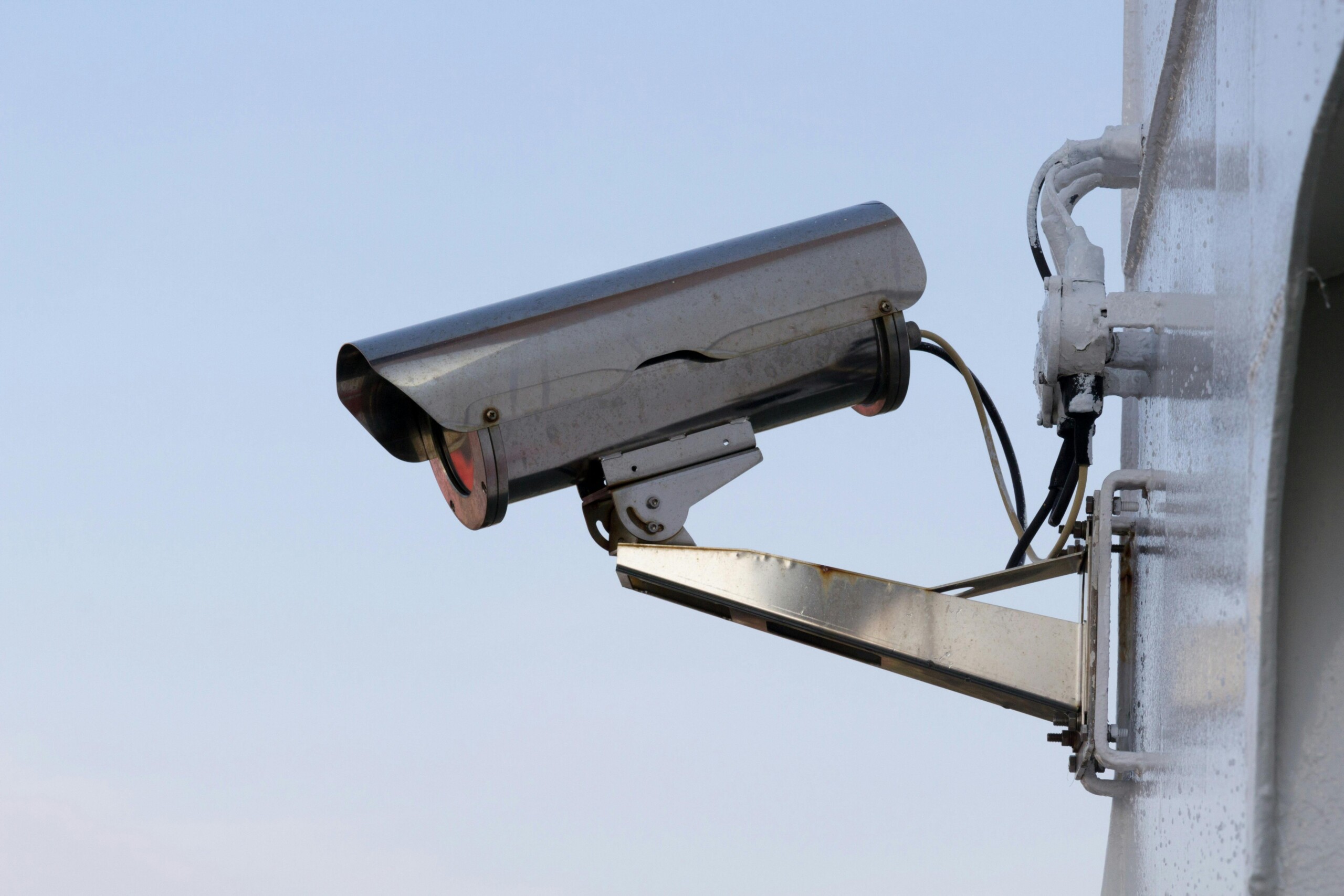How to Improve Security and Access Control with RFID Technology


Every retail business worries first about security. After that, you need point-of-sale (POS) solutions that will enhance your retail operations. Retail owners and POS solution providers constantly seek reliable, efficient, and cost-effective methods to safeguard their assets and streamline their operations. Improving security and Access Control with RFID is the new hype for retailers, and we will explore it here.
It’s a common concern, and understandably so—there isn’t a one-size-fits-all answer. RFID technology, however, offers a promising solution that merits detailed exploration.
This article covers everything about radio frequency identification (RFID) technology, including how it works, its use, its future, and how it can improve security and access control. This guide is useful for retail, security, and technology enthusiasts. It will help them choose RFID technologies for safety and efficiency.
Overview of RFID Technology
How RFID Technology Works
RFID automatically locates and tracks items using electromagnetic fields. Because they store information electronically, these tags can be read from afar even with poor vision. Radio frequency identification systems include an antenna, RFID tags (transponders), and RFID readers (interrogators).
Types of RFID Systems
RFID systems are classified based on their frequency ranges, each suitable for different applications:
- Low Frequency (LF) RFID: Operating at 125-134 kHz, LF RFID systems have a short read range of around 10 cm. They are ideal for animal tracking and secure access control applications requiring close-range interaction.
- High Frequency (HF) RFID: These systems operate at 13.56 MHz and have a read range of about 30 cm to 1 meter. HF RFID is commonly used in library book tracking, contactless payment systems, and various secure access control scenarios.
- Ultra-High Frequency (UHF) RFID: Operating between 856 MHz and 960 MHz, UHF RFID systems can read tags from distances up to 12 meters or more. They are extensively used in supply chain management, asset tracking, and other applications that require long read ranges.
Benefits of RFID in Security and Access Control
Enhanced Security Features
RFID technology significantly bolsters security by enabling precise identification and tracking of individuals and assets in real-time. Unlike traditional keycards or passwords, which can be easily lost or shared, RFID tags are unique to each user and difficult to duplicate. They can also store encrypted data, adding an additional layer of security. For instance, in a corporate environment, RFID controls and monitors access to sensitive areas, ensuring that only authorized personnel can enter.
Efficiency in Access Management
RFID technology streamlines access management processes by automating the identification and authorization steps. This automation reduces the need for manual checks and monitoring, freeing up security personnel to focus on more critical tasks. Managing access for numerous employees or customers becomes significantly more manageable in large organizations or retail environments. RFID systems can instantly log entry and exit data, providing comprehensive records without human intervention.
Cost-effectiveness
While the initial investment in RFID technology might be considerable, the long-term savings and benefits are substantial. RFID systems reduce labor costs associated with manual security checks and inventory management. Additionally, they minimize losses due to theft or misplacement, offering a high return on investment. The durability and low maintenance requirements of RFID tags and readers further enhance their cost-effectiveness.
Implementing RFID Technology

Steps to Implement RFID Solutions
Implementing RFID technology involves several critical steps to ensure a successful rollout:
- Assessment: Conduct a thorough assessment of your organization’s needs. Determine what you aim to achieve with RFID—whether it’s enhanced security, better access control, or improved inventory tracking.
- Planning: Develop a detailed implementation plan. This plan should outline the RFID project’s objectives, scope, budget, and timeline. Identify key stakeholders and form a project team.
- Selection: Choose the appropriate RFID hardware and software that align with your requirements. Consider factors such as read range, tag durability, and integration capabilities with existing systems.
- Installation: Install the RFID hardware at strategic locations. Ensure that readers and antennas are positioned to maximize coverage and minimize interference.
- Testing: Conduct comprehensive testing to ensure the RFID system operates as intended. Address any issues or shortcomings during this phase.
- Training: Train employees on how to use the RFID system. This includes understanding how to interact with RFID tags, troubleshoot common issues, and utilize the data generated by the system.
Common Challenges and Solutions
Despite its advantages, RFID technology comes with certain challenges that need addressing:
- Interference: RFID systems can experience interference from metals and liquids, obstructing signal transmission. Proper planning, such as selecting the right type of RFID tags and readers, can mitigate these issues. For instance, UHF RFID tags are typically more sensitive to interference but offer longer read ranges.
- Privacy Concerns: The ability of RFID to track individuals and assets raises privacy concerns. Implementing robust data protection measures and ensuring compliance with privacy regulations is crucial. Encrypting RFID data and controlling access to the system can help protect sensitive information.
- Cost: The initial setup cost for an RFID system can be significant. However, choosing scalable solutions and prioritizing critical areas for initial deployment can help manage expenses. Over time, the cost savings from reduced labor and enhanced security can offset the initial investment.
RFID Solution Providers in Canada Toronto
Selecting a reliable RFID solution provider is essential for a successful implementation. In Toronto, Canada, several providers offer comprehensive RFID solutions tailored to various needs:
- RFID Canada: Specializes in RFID solutions for access control, asset tracking, and inventory management. They provide a wide range of RFID hardware and software to meet diverse industry requirements.
- GAO RFID: Offers an extensive array of RFID products, including readers, tags, and integrated systems. Their solutions cater to industries ranging from healthcare to logistics.
- SYNOMETRIX: Provides RFID systems for security, access control, and workforce management. Their offerings include customized solutions designed to meet specific organizational needs.
RFID Tracking Solutions
RFID Tracking Solutions Overview
RFID tracking solutions enhance visibility and control over assets, inventory, and personnel. These systems utilize RFID tags and readers to capture and store data, enabling real-time tracking and management. RFID tracking solutions are widely adopted across various industries, contributing to improved operational efficiency and security.
Applications in Different Industries
- Healthcare: RFID technology is pivotal for tracking medical equipment, managing inventory, and ensuring patient safety. By tagging equipment and supplies, hospitals can reduce errors, prevent theft, and streamline operations.
- Logistics: In logistics, RFID enables real-time tracking of shipments, improving supply chain efficiency and reducing the risk of lost or misplaced items. It allows for better inventory control and faster processing times.
- Retail: Retailers use RFID to manage inventory, prevent theft, and enhance the customer experience. By tagging products, stores can maintain accurate inventory levels, ensure product availability, and reduce checkout times.
- Manufacturing: In manufacturing, RFID monitors production processes, manages inventory, and tracks finished goods. This leads to improved productivity, reduced downtime, and better quality control.
RFID Tracking Solutions USA
In the USA, several companies specialize in providing advanced RFID tracking solutions:
- Zebra Technologies: Known for its comprehensive range of RFID products, including readers, printers, and tags, Zebra Technologies offers solutions for various industries. Their robust systems are designed to enhance efficiency and accuracy.
- Impinj: Provides a versatile RFID platform that includes RFID readers, tags, and software. Impinj’s solutions are known for their reliability and scalability, making them suitable for diverse applications.
- Alien Technology: Offers innovative RFID solutions that include high-performance readers and tags. Alien Technology’s products are designed to meet the needs of retail, logistics, and manufacturing industries.
Case Studies of Successful RFID Implementations
Case Study 1: Corporate Security Enhancement
A leading corporation sought to enhance its security infrastructure using RFID technology. By integrating RFID tags with employee ID cards, the company could monitor and control access to restricted areas. This implementation not only improved security but also streamlined the process of granting and revoking access, significantly reducing administrative overhead.
Case Study 2: Hospital Access Control
A major hospital adopted RFID technology to manage access to sensitive areas such as operating rooms and medication storage. RFID tags were issued to authorized personnel, ensuring that only qualified staff could enter these areas. This system improved patient safety and ensured compliance with regulatory requirements, enhancing overall operational efficiency.
Case Study 3: Retail Inventory Management
A large retail chain implemented RFID technology to optimize its inventory management processes. By tagging products with RFID labels, the retailer could track inventory levels in real-time, reducing stockouts and overstock situations. This implementation led to increased sales, improved customer satisfaction, and reduced inventory costs, demonstrating the significant impact of RFID on retail operations.
Advanced Features of RFID Technology
Integration with Other Security Systems
RFID technology is more effective because it integrates with other security systems. RFID and biometric systems, such as fingerprint or facial recognition, can be combined to create multi-factor authentication solutions.
With this integration, we can tighten security and allow only checked-out users to enter. Connecting RFID to video surveillance systems provides additional security. Then, access events could be recorded and viewed live.
Real-Time Monitoring and Alerts
RFID technology has the advantage of providing real-time alerts and monitoring. If an RFID system detects unauthorized entry or a security breach, it can immediately alert security. Real-time monitoring improves operational efficiency, security, and asset/person tracking.
Customizable Access Levels
RFID technology enables companies to manage employee access based on job duties. This personalization lowers security risks by allowing only authorized access.
Consider a business example. Departments can have varying access levels based on their requirements. Customizable access levels make the building more secure and manageable for visitors and contractors.
Future Trends in RFID Technology

Innovations in RFID Technology
RFID technology continues to evolve, with new innovations aimed at enhancing its capabilities and expanding its applications:
- Enhanced Tag Performance: Development of RFID tags with greater read ranges, higher data capacity, and improved durability. These advancements make RFID systems more reliable and versatile.
- Wearable RFID Devices: Integrating RFID technology into wearable devices, such as smartwatches and badges, provides convenient and secure access control solutions. These devices can also be used for time and attendance tracking.
- Energy-Harvesting RFID Tags: Tags that can harvest energy from ambient sources, such as light or radio waves, reduce the need for batteries. This innovation enhances sustainability and reduces maintenance requirements.
The Role of AI and IoT in RFID Systems
RFID technology is improving due to IoT and AI. AI algorithms can find patterns and outliers in RFID systems’ massive data sets to improve security and operational efficiency.
RFID and Internet of Things links allow devices to share data and automate tasks in real-time. Have an RFID-enabled inventory system that automatically reorders supplies when they run out to get more done with fewer mistakes.
Emerging Standards and Regulations
RFID technology is becoming more popular, so new laws are being made to ensure its safe and effective use.
These standards address data security, interoperability, and environmental impact. Businesses must adapt to these changes to use RFID’s latest features and comply with the law. Following laws shows you care about security and best practices. This builds stakeholder and customer trust.
Conclusion
RFID technology has transformed store, hospital, and business security and access. Besides being cheap, it’s more secure and easier to manage. Implementing RFID requires evaluation, planning, selection, installation, testing, and training. Interference, privacy concerns, and high startup costs are common issues.
Successful RFID implementations improve operational efficiency and security. RFID technology’s real-time monitoring, customizable access levels, and integration with other security systems make it more useful.
Along with new ideas like wearable RFID devices, energy-harvesting tags, and better tag performance, artificial intelligence and the Internet of Things can make RFID systems more useful in more situations. Its best features are its future-proof, cheap, and biometric-compatible features.
By working with industry leaders such as 44degNorth, you can leverage their expertise and comprehensive RFID solutions to enhance your security and access control systems. 44degNorth offers tailored RFID solutions to meet your specific needs, ensuring seamless and effective implementation.
Their experienced team provides support at every step, from initial assessment to system maintenance, ensuring you get the most out of your RFID investment.
Ready to enhance your security and access control with state-of-the-art RFID technology?
Contact 44degNorth today to learn how their innovative RFID solutions can benefit your organization.
Call Now: +1 (647) 937-9080
Reach Us At: innovation@44degnorth.tech
FAQs
What is RFID technology?
RFID technology uses electromagnetic fields to identify and track tags attached to objects automatically. These tags contain electronically stored information that can be read from a distance without direct line of sight.
How does RFID improve security and access control?
RFID improves security and access control by enabling real-time tracking and monitoring, providing customizable access levels, and integrating with other security systems to create multi-factor authentication solutions.
What industries benefit the most from RFID tracking solutions?
Healthcare, logistics, retail, and manufacturing industries benefit significantly from RFID tracking solutions due to improved inventory management, operational efficiency, and enhanced security.
What are the common challenges in implementing RFID technology?
Common challenges include interference from metals and liquids, privacy concerns, and the initial setup cost. These can be mitigated through proper planning, robust data protection measures, and scalable solutions.
Who are the top RFID solution providers in Canada Toronto?
Top RFID solution providers in Toronto, Canada, include RFID Canada, GAO RFID, and SYNOMETRIX. These providers offer a range of solutions tailored to different industries.
What advancements can we expect in RFID technology?
Future advancements in RFID technology include enhanced tag performance, wearable RFID devices, energy-harvesting RFID tags, and the integration of AI and IoT for improved data analysis and automation.
